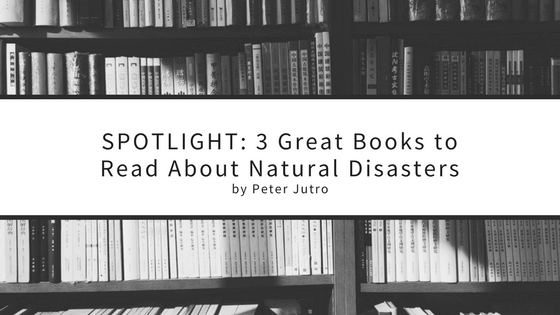In this era of infinite possibility, we are still not free from disaster. The raw force of nature can–and often does–overwhelm the unprepared at any given time. Crops destroyed, resources gone, whole cities disrupted, lives obliterated: these are the threats leveled by natural disaster, and these are the reasons why it is essential that people learn how such events are caused, how damage can be mitigated, and how their aftermath can be managed.
The following three books are excellent resources for anyone interested in deepening their knowledge of what natural disasters actually are, what they’ve done in the past, and how we may try to prevent them from doing the same, or worse, in the future.
At Risk: Natural Hazards, People’s Vulnerability and Disasters – By Piers Blaikie, Terry Cannon, Ian Davis, and Ben Wisner
First published in 1994, At Risk was a milestone achievement that altered how many perceive natural disasters. It claims that the occurrence of what we generally term natural disasters: earthquakes, hurricanes, floods, etc., are only a fragment of what disaster comprises. The prime factor, argues At Risk, is the vulnerability of particular groups; for example, people who live in low-lying areas may suffer greatly after a flood, while the same flood may glance harmlessly off the lands and property of those living in higher, safer areas.
The book explains the phenomenon of natural disaster using the so-called “crunch model,” which examines the intensity of a hazard, and multiplies it by the vulnerability level of a given
group to determine and predict the impact of disasters. It shifts the idea of disasters as random aberrations, to disasters as an abject failure to properly “develop” disaster-vulnerable areas.
A Crack in the Edge of the World: America and the Great California Earthquake of 1906 – By Simon Winchester
Over a century ago, California was struck by a magnitude 8.25 earthquake. Fires raged for three days, leaving 3,000 dead, and the city of San Francisco in ashes. Winchester masterfully relates the story of the quake in the broader context of American history; he explores the devastation left in its wake, and the long process of rebuilding. The book also delves into the quake’s underlying geological causes, how subterranean events culminated in unparalleled destruction, and how the same is likely to happen again.
The Big Burn: Teddy Roosevelt and the Fire that Saved America – By Timothy Egan
The Big Burn tell the tale of the largest wildfire in American history–a blaze that laid waste to an area larger than the entire state of Connecticut in just two days. But the narrative focuses on much more than the disaster itself. Leaning heavily on personal accounts, The Big Burn frames the efforts to quell the flames as the first piece as a literal “trial by fire” for the fledgling US Forest Service, and how their work was the catalyst for widespread acceptance of the forest service, and the national park system.
These books are just a sampling of what’s available and well worth reading for anyone interested in understanding the past and being prepared for disasters. So many other books dealing with disasters of one sort or another offer an excellent combination of readability and narrative; I’ll be writing about some of these soon as well.

